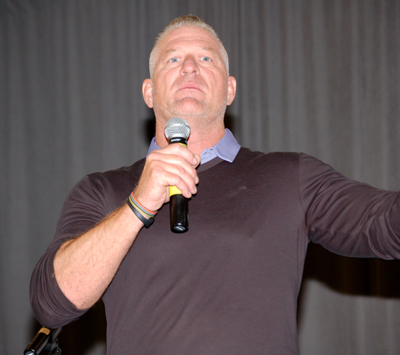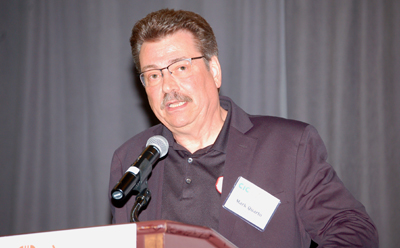A thermal imaging camera with a scope can be used to detect lithium-ion battery off-gassing that cannot be seen with the naked eye in addition to ongoing temperature scans to determine if there is an upward trend. A four-gas meter should also be used within 4 feet of the EV to detect carbon monoxide and hydrogen.
Zartman said fire codes “are never going to catch up with how fast this industry is evolving,” so shops may not be able to get a lot of helpful guidance from fire marshals about how to set up space for EV repair or storage. Insurance underwriters may be a better resource, he suggested.
“I would encourage you to look at the spaces where you are operating on the vehicles and have really strong protocols for rapid removal of vehicles,” he said. “If a vehicle starts going through a thermal runaway, have a practiced, planned process in place about how you protect your personnel, and how to remove the fuel source from the building.”

He also recommended making wherever EV batteries are stored “very fire resistant” and isolated from the rest of a shop's structures.
“Because the reality of every sprinkler system on the planet is it’s going to be designed to protect the building but it is not going to put out a battery fire if you have one and have multiple battery packs in a space,” Zartman said. “You will lose all the contents of that room.”
Importance of Billing Consistently
As at every CIC, the agenda included a variety of topics. During one panel discussion for example, a shop owner discussed seeing differences in what some insurance companies will pay for versus other companies. Ohio attorney Erica Eversman offered a caution about billing consistently no matter who is paying for the vehicle repairs.
“If you have a good company, so to speak, that pays, you want to keep that good company paying well,” Eversman said. “They need to see that you are always demanding the same thing no matter who the carrier is. Because they’re going to be looking at documents in subrogation,” and you don’t want them to see, “Oh, well, you charged us for this but you didn’t charge that other insurance carrier for that.”
Apply the same business and billing practices across all customers, irrespective of whether the job is self-paid or paid for by any insurer, Eversman suggested.










John Yoswick